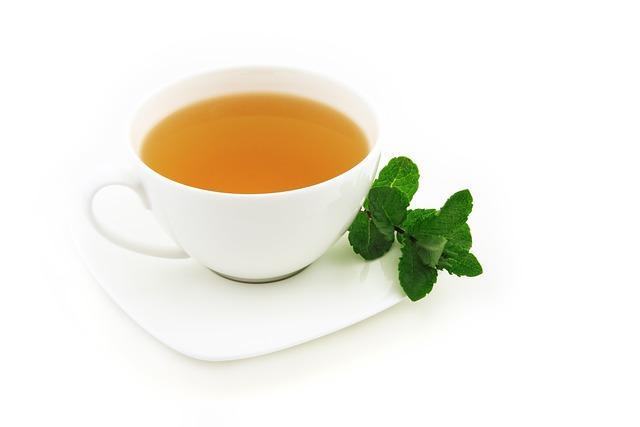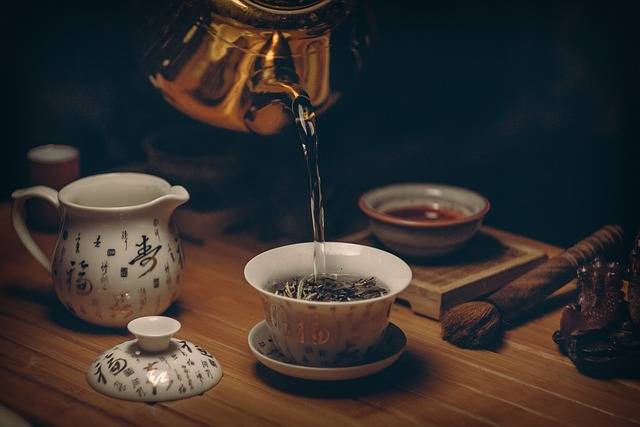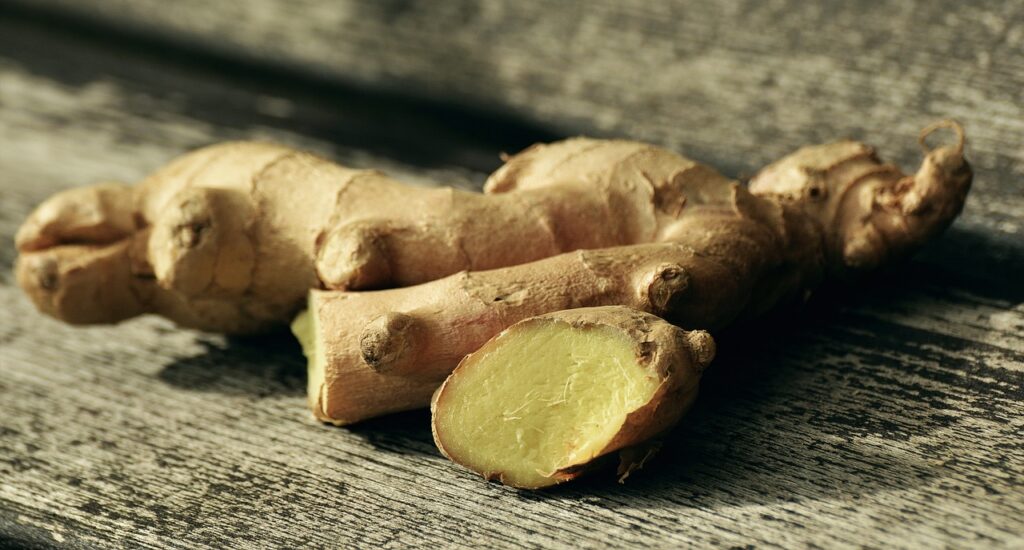Green tea, a centuries-old elixir, has taken the world by storm. This aromatic and soothing beverage is celebrated for its remarkable health benefits and its role as a cultural emblem in various parts of the globe. In this article, we will embark on a journey to uncover the myriad wonders of green tea, from its nutritional composition to its impact on health, and explore how it can be incorporated into our daily lives. In this journey through the enchanting world of green tea, we will explore the myriad ways in which this ancient brew has become synonymous with health and vitality. From its origins in ancient China to its far-reaching influence on modern diets, we will uncover the secrets and science behind green tea’s remarkable properties. Whether you are a seasoned tea enthusiast or new to the world of health and wellness, this exploration promises to enlighten, inform, and inspire, as we delve into the mysteries of green tea – nature’s elixir for health and vitality. So, pour yourself a cup, and let’s embark on this aromatic adventure together.

Introduction to Green Tea:
A Brief History:
Green tea’s history spans over 5,000 years, originating in China. It became a cultural staple, spreading to Japan and worldwide, celebrated for its flavor and numerous health benefits. From a mystical legend about Emperor Shen Nong’s discovery to the Zen-inspired Japanese tea ceremonies, green tea’s journey is a testament to its enduring appeal and significance. Today, it continues to be cherished for its delicate taste and various wellness advantages, securing its place as a timeless elixir of nature.
Popularity and Cultural Significance:
Green tea is deeply rooted in various cultures. In Japan, the tea ceremony, known as “chanoyu” or “sado,” is a revered tradition. It symbolizes harmony, respect, purity, and tranquility. Similarly, in China, green tea is an essential part of daily life, with various rituals dedicated to its preparation and consumption.
Green tea’s popularity transcends borders and generations, earning its status as one of the world’s most beloved beverages. Its significance extends far beyond its delightful flavor, as it is deeply intertwined with cultural traditions.

Nutritional Composition of Green Tea:
Certainly, green tea is renowned not only for its delightful flavor but also for its rich nutritional composition. Here’s a detailed breakdown of its nutritional components:
Catechins: Green tea is particularly abundant in catechins, which are a type of flavonoid. The major catechins found in green tea include epicatechin (EC), epicatechin gallate (ECG), epigallocatechin (EGC), and epigallocatechin gallate (EGCG). EGCG is especially notable for its potent antioxidant properties and its potential health benefits, which range from supporting cardiovascular health to aiding weight management.
Caffeine: Green tea contains caffeine, though in a milder concentration compared to coffee. The presence of caffeine contributes to its stimulating and alertness-enhancing effects. It can provide a gentle energy boost without the jittery side effects associated with higher caffeine sources.
L-Theanine: This unique amino acid is found almost exclusively in tea leaves. L-theanine is known for its ability to induce a sense of relaxation and calm without causing drowsiness. When combined with caffeine, as it is in green tea, it promotes focused, sustained mental alertness.
Vitamins: Green tea contains trace amounts of vitamins, with vitamin C (ascorbic acid) being the most notable. While the vitamin content is relatively low, it still contributes to the overall nutritional profile and antioxidant capacity of green tea.
Minerals: Green tea is a source of several minerals, including potassium, manganese, and fluorine. These minerals play various roles in maintaining overall health, from supporting heart function (potassium) to strengthening teeth (fluorine).
Polyphenols: Beyond catechins, green tea contains other polyphenols such as quercetin and chlorogenic acid, which contribute to its antioxidant and anti-inflammatory properties.
Amino Acids: In addition to L-theanine, green tea contains various other amino acids, although in smaller quantities. These amino acids are essential for various bodily functions and contribute to the overall nutritional value of the tea.
Fiber: The leaves of the tea plant contain a small amount of dietary fiber. While the fiber content in a cup of green tea is relatively low, it can still contribute to digestive health and promote a feeling of fullness.
Essential Oils: Green tea’s aroma and flavor are influenced by essential oils. These oils contain various beneficial compounds and contribute to the overall sensory experience of drinking green tea.
This diverse nutritional composition makes green tea more than just a flavorful beverage; it’s a natural source of health-enhancing compounds. The combination of catechins, caffeine, and L-theanine, in particular, creates a unique synergy that offers a broad spectrum of health benefits, from boosting metabolism and aiding weight management to supporting cardiovascular health and providing relaxation. Green tea is a nutritional powerhouse, cherished for its holistic impact on well-being.

Health Benefits of Green Tea:
Green tea has earned a reputation as a healthy beverage, supported by a wealth of scientific research. Its health benefits are diverse and can positively impact various aspects of physical and mental well-being. Here’s a detailed exploration of the health benefits of green tea:
Antioxidant Power: Green tea is rich in antioxidants, primarily in the form of catechins, especially epigallocatechin gallate (EGCG). These antioxidants help combat oxidative stress, reduce cellular damage, and protect the body from harmful free radicals. This, in turn, may lower the risk of chronic diseases, including cancer.
Heart Health: Green tea has been linked to improved cardiovascular health. Regular consumption may help reduce the risk of heart diseases by lowering bad LDL cholesterol levels, improving blood vessel function, and regulating blood pressure.
Weight Management: Green tea can support weight management and fat loss. The combination of caffeine and catechins enhances metabolism and promotes fat oxidation. It can aid in maintaining a healthy body weight and may assist in weight loss efforts when combined with a balanced diet and exercise.

Type 2 Diabetes: Some studies suggest that green tea may help regulate blood sugar levels and improve insulin sensitivity, making it a potential dietary inclusion for individuals at risk of or already dealing with type 2 diabetes.
Cognitive Function: The caffeine and L-theanine content in green tea work together to enhance brain function. They improve alertness, concentration, and mood, providing a natural mental boost without the jitters associated with high caffeine intake.
Oral Health: Green tea contains fluoride, which supports dental health by reducing the risk of tooth decay. It also exhibits natural antibacterial properties that can inhibit the growth of harmful oral bacteria, reducing the risk of oral infections.
Anticancer Properties: While more research is needed, some studies have suggested that the antioxidants in green tea, particularly EGCG, may help prevent the development and progression of certain cancers. It’s often associated with a lower risk of breast, prostate, and colorectal cancers.
Skin Health: Green tea’s anti-inflammatory and antioxidant properties can contribute to healthier skin. Topical application of green tea extracts or the consumption of green tea may help reduce the effects of UV damage and slow down the aging process.
Digestive Health: The compounds in green tea may support digestive health by promoting the growth of beneficial gut bacteria and reducing inflammation. This can lead to improved digestion and overall gut well-being.
Stress Reduction: L-theanine in green tea has anxiolytic (anxiety-reducing) effects. It promotes relaxation without causing drowsiness, making it beneficial for stress management and mental well-being.
It’s important to note that the specific health benefits of green tea can vary depending on the individual, their overall diet, and lifestyle. Additionally, while green tea offers many advantages, it should be consumed in moderation, as excessive intake of caffeine can lead to adverse effects.
Preparing and Brewing Green Tea:
Different Varieties of Green Tea:
Green tea comes in a wide array of varieties, each with its unique flavor, aroma, and characteristics. These differences are primarily influenced by factors like the tea plant cultivar, growing region, processing methods, and even the season of harvest. Here’s an overview of some of the most popular varieties of green tea:
-
- Sencha: Sencha is one of the most common and widely consumed green teas in Japan. It’s characterized by its vibrant green color, grassy aroma, and mildly astringent flavor. It’s typically made from the first flush of young tea leaves.
- Matcha: Matcha is a finely ground green tea powder used in traditional Japanese tea ceremonies. It’s made from shade-grown tea leaves, which are stone-ground to produce a vibrant green powder. Matcha has a rich, umami flavor and is known for its high concentration of antioxidants.
- Dragon Well (Longjing): This is a famous Chinese green tea, cultivated primarily in the Zhejiang province. It has a flat, sword-shaped leaf and a subtle, chestnut-like flavor with a sweet aftertaste. Dragon Well is often praised for its delicate aroma and refreshing taste.
- Gyokuro: Another premium Japanese green tea, Gyokuro, is grown in the shade for several weeks before harvest, resulting in a sweeter and milder flavor. It has a vivid green color and a complex, umami-rich taste.
- Gunpowder: This Chinese green tea is known for its rolled, pellet-like leaves that resemble gunpowder granules. It has a smoky, earthy flavor and is often used to make Moroccan mint tea.
- Jasmine Tea: Jasmine tea is a scented green tea, commonly made by layering green tea leaves with fresh jasmine blossoms. This imparts a fragrant and floral aroma to the tea, making it a popular choice for those who appreciate a delicate, perfumed taste.
- Bancha: Bancha is a Japanese green tea made from older tea leaves and twigs, giving it a milder flavor and lower caffeine content compared to other green teas. It’s often enjoyed in the afternoon or evening due to its light character.
- Hojicha: Hojicha is a roasted green tea from Japan. The roasting process gives it a warm, toasty flavor with nutty undertones. Hojicha is often lower in caffeine and has a reddish-brown color.
- Bi Luo Chun: A famous Chinese green tea, Bi Luo Chun, is grown around Dong Ting Mountain in Jiangsu province. It is characterized by its twisted, delicate leaves and a sweet, fruity flavor with floral notes.
- Pi Lo Chun: Another renowned Chinese green tea, Pi Lo Chun, is known for its small, curly leaves. It has a fresh, grassy aroma and a gentle, slightly sweet taste.
These are just a few examples of the diverse world of green teas. Each variety offers a unique sensory experience, allowing tea enthusiasts to explore a wide range of flavors, aromas, and textures. The choice of green tea often comes down to personal preference and the occasion, as different types of green tea complement various moods and moments.
Correct Brewing Techniques:
Brewing green tea is an art that requires careful attention to detail. Using the correct techniques ensures that you’ll extract the best flavor and health benefits from the tea. Here’s a step-by-step guide on how to brew green tea:
Ingredients and Equipment:
-
- Green Tea: Use high-quality green tea leaves or tea bags. The type of green tea you choose will impact the flavor, so select one that suits your taste preferences.
- Water: Use fresh, clean, and preferably filtered water. The quality of the water is crucial because impurities or a strong mineral taste can affect the tea’s flavor.
- Teapot or Teacup: Opt for a teapot or teacup made of glass, ceramic, or porcelain. Avoid metal vessels as they can affect the tea’s taste.
Brewing Steps:
-
- Water Temperature: Green tea is sensitive to water temperature. Heat the water to around 175-185°F (80-85°C). Using water that is too hot can make the tea bitter, while water that is too cool may result in a bland taste.
- Preheat the Teapot or Teacup: Pour a small amount of hot water into the teapot or teacup to warm it up. Then, discard this water.
- Measuring Tea Leaves: The ideal amount of tea leaves depends on the type of green tea and your personal preference. As a general guideline, use about 1 teaspoon of loose tea leaves for every 8 ounces (240ml) of water. Adjust the amount to taste.
- Adding the Tea: Place the green tea leaves in the preheated teapot or teacup.
- Pouring Water: Pour the hot water over the tea leaves. Ensure the water covers the leaves completely. Avoid using boiling water, as it can scald the leaves and result in a bitter brew.
- Steeping Time: The steeping time for green tea is typically shorter than that for black or oolong teas. Start with a steeping time of 1-3 minutes, and adjust to your preference. For more delicate green teas, a shorter steeping time is recommended.
- Cover the Tea: Cover the teapot or teacup with a lid or a saucer to trap the heat and aroma.
- Straining or Removing Leaves: If you used loose tea leaves, remove them from the teapot or teacup after the appropriate steeping time to prevent over-brewing. If you used tea bags, simply remove the tea bag.
- Enjoy: Your green tea is now ready to be savored. Sip it slowly to appreciate the flavors and aromas.
Optional Additions:
-
- Honey or Sugar: If you prefer a sweeter taste, you can add honey or sugar to your green tea.
- Lemon: A slice of lemon can enhance the flavor and provide a citrusy note to your tea.
- Mint: Fresh mint leaves can be added to the tea for a refreshing twist.
- Ginger: Thin slices of fresh ginger can be steeped with green tea to create a warming, aromatic infusion.
Remember that these guidelines are general, and the best way to brew green tea to your liking may require some experimentation. By adjusting the amount of tea, water temperature, and steeping time, you can tailor your green tea experience to suit your taste preferences perfectly.
Creative Ways to Enjoy Green Tea:
Green tea is a versatile beverage that can be enjoyed in various creative ways beyond the traditional cup of hot tea. Here are some innovative and delightful ways to incorporate green tea into your daily routine:
-
- Green Tea Smoothie: Blend green tea with fruits (e.g., banana, mango, or pineapple), yogurt, honey, and ice to create a refreshing and healthy green tea smoothie. It’s a great way to start your day or as a post-workout recovery drink.
- Green Tea Lattes: Replace regular milk with frothed or steamed milk in your green tea to make a green tea latte. Sweeten it with honey or your preferred sweetener for a comforting and creamy beverage.
- Iced Green Tea: Brew a strong cup of green tea, let it cool, and pour it over ice for a refreshing iced tea. Add a slice of lemon or a sprig of mint for an extra zing.
- Green Tea Desserts: Green tea’s earthy flavor pairs wonderfully with various desserts. You can make green tea ice cream, green tea-flavored cakes, cookies, or even green tea-flavored chocolates.
- Green Tea Infused Water: Add green tea bags to a pitcher of cold water and let it infuse. This creates a light, subtly flavored water that’s perfect for staying hydrated throughout the day.
- Green Tea Marinades: Create a flavorful marinade for meat or tofu by mixing green tea with soy sauce, ginger, garlic, and your choice of seasonings. It imparts a unique and savory twist to your dishes.
- Green Tea Salad Dressing: Combine brewed green tea with olive oil, vinegar, honey, and a dash of Dijon mustard to create a homemade green tea vinaigrette for your salads.
- Green Tea Rice: Infuse green tea into the water you use to cook rice. This gives the rice a light green tint and a subtle tea flavor. It’s a great accompaniment for various Asian dishes.
- Green Tea Mocktails: Create non-alcoholic mocktails by mixing green tea with sparkling water and a splash of fruit juice. Garnish with citrus slices or fresh herbs for an appealing presentation.
- Green Tea Facial Masks: Green tea is renowned for its antioxidant properties. You can use it to make homemade facial masks, combining brewed green tea with ingredients like honey, yogurt, or oatmeal for skin rejuvenation and a healthy glow.
- Green Tea Bath Soak: Brew a strong batch of green tea and add it to your bathwater. The antioxidants in green tea can have a soothing effect on your skin.
- Green Tea Popsicles: Freeze brewed green tea with a bit of sweetener and perhaps some chopped fruit to create green tea popsicles – a delightful and healthy summer treat.
- Green Tea Sushi Rolls: Prepare sushi rolls with green tea-infused rice or use green tea as a dipping sauce for a unique culinary experience.
These creative ways to enjoy green tea not only offer a pleasant change from the usual cup of tea but also allow you to explore the versatility of this ancient elixir. Whether in the kitchen, as a skincare remedy, or in your beverages, green tea can be a delightful and healthful addition to your daily routine.
for more details visit: medium.com
Conclusion:
In conclusion, green tea is a remarkable beverage that offers a multitude of health benefits, from aiding in weight loss to promoting heart health and enhancing brain function. With its rich history, cultural significance, and versatility, green tea has firmly established itself as a cherished global tradition. So, why not embrace the soothing and healthful qualities of this ‘nature’s elixir’ in your daily life?
Frequently Asked Questions (FAQs):
FAQ 1: Can green tea be consumed during pregnancy?
While green tea is generally safe, it’s advisable to limit caffeine intake during pregnancy. Consult with your healthcare provider for personalized guidance.
FAQ 2: Is green tea better than black tea?
Both green tea and black tea offer unique health benefits. The choice between them depends on personal preferences and health goals.
FAQ 3: How does green tea help with weight loss?
Green tea’s metabolism-boosting properties and ability to enhance fat oxidation make it a supportive component in weight loss efforts.
FAQ 4: What is the ideal time to drink green tea?
The ideal time to drink green tea varies from person to person. Some prefer it in the morning for an energy boost, while others enjoy it as a calming evening ritual.
FAQ 5: Are there any age restrictions for green tea consumption?
Green tea can be consumed by individuals of various age groups. However, it’s advisable to limit caffeine intake for children and consult with a healthcare provider if you have concerns.



